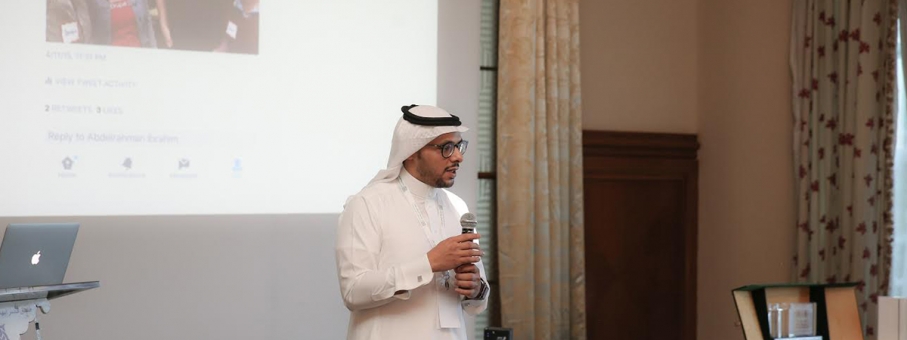Organizing Your Research Article Introductions: The C.A.R.S. Model
On Monday, February 13, 2017, Hassan Costello and Professor Habib Abdesslem held a seminar titled, "Introductions in Locally Published Research Articles in Linguistics: Towards a Syntagmatics of Moves," organized by the Language Research Center of the Faculty of Languages and Translation. The presentation drew an analogy between the histories of traditional grammars and Swales’ rhetorical model for Research Papers Introductions. It argued that though core grammar rules for the sentence and core rhetorical patterns for the Introduction have originated from description and have risen to the status of prescription, the study of language use in different contexts can consolidate the core grammar rules and the core rhetorical patterns without undermining variation and change. The presentation applied Swales’ Create-a-Research-Space-Model (CARS) to describe the rhetorical patterns of Research Articles Introductions in linguistics published by two University journals in the Kingdom of Saudi Arabia. It offered representations of the sequencing of Moves in core and extended Move patterns. It was recommended that writers realize the three Moves in the order Swales presents them.
The Q&A session (King Abdullah Road Campus joined via teleconferencing) was vivacious, offering participants every opportunity to question the presenters and develop ideas. It is worth mentioning that Dr. Abdulkhaleq Al Qahtani, Vice Dean of Higher Studies, provided insightful input and recommendations for further study based on his astute Doctoral Dissertation at Oklahoma State University.
The presenters of this seminar would like to express their profound gratitude to Dr. Abdullah Al Melhi, Dean, and Dr. Ismail Al Refaai, Director of the Language Research Center & MA Programs Coordinator, for their continuous support and encouragement.
Please direct any correspondence concerning this particular seminar to habdessalem@kku.edu.sa or hscostello@kku.edu.sa. This study will be published in the Arab Journal of Applied Linguistics (AJAL) shortly and will be available on eprints.kku.edu.sa for further review at that time.
Date: 2/13/2017
Source: MD Adil
Multimedia Contribution: Sayed Karim



